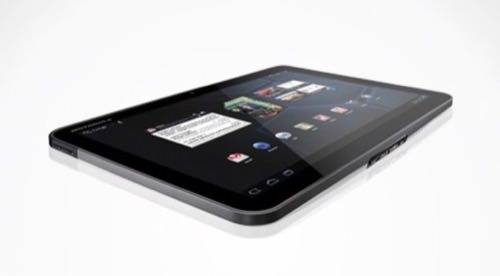The natural inclination of the tech punditry upon hearing that Google is going to sell a tablet through its own online store is to say, “This is going to be a disaster; didn’t it learn anything with the original Nexus debacle?” This is the wrong conclusion. While we are still in the general realm of mobile technology, the difference between the way consumers purchase tablets and the way they purchase smartphones is completely different. Google may be onto something.

Think about it. Where can you get an iPad? Everywhere. Online. In the Apple store. At Target, Best Buy, Verizon, AT&T. Part of the beauty of Apple is its ubiquitous sales strategy and its ability to meet demand. The Kindle Fire? Available at Best Buy and through the largest online retailer in history. Google has the clout, the wherewithal and, hopefully, the product that could truly make a dent in the market by selling its own Android tablet.
Smartphone Versus Tablet: Big Difference
Why did you buy your current smartphone? Chances are, you found a good one, thought it was a good price through your carrier and signed the next two years of your life away. The way carriers subsidize smartphones is conducive to buying the product. You are going to need cellular service anyway and it is easier to get a smartphone for $199 or less and not deal with the hassle.
There was probably a good chance you were looking at some type of Android tablet at one point or another as well. The Motorola Xoom was (theoretically) sexy when it came out. But, to get a good price and data plan on it you had to sign up for a contract with Verizon. Even at that, the Xoom was still too expensive. That doesn’t even take into account that it did not live up to consumer expectations.

Image: Motorola Xoom, the original Android tablet
I like a tablet with a data plan. I am in the minority of tablet-buying consumers when I say that, but it is convenient. Most people use their tablets at home over Wi-Fi. They buy a $499 iPad because it is reasonably priced and does what it promises (Apple’s marketing also helps).
The Kindle Fire has sold millions of units because it is A) a cheap tablet that B) did not require a contract with a data plan. Like Apple, it also helped that Amazon is a brand that consumers trust and can generate a great deal of excitement. Amazon proved that a tablet can become a consumer hit sold primarily through online retail. Amazon does not release Kindle sales figures (of any kind), but it is likely that the vast majority of Fire sales went through Amazon.com.
Most people do not buy smartphones online. Amazon and several other resellers do a fairly brisk business, but that is still usually done through a contract to one of the major carriers. The thought of buying a smartphone, off contract, for $500 or more turns consumers off. That is one of the reasons that the original Google Nexus smartphone ultimately failed. Tablets are a different entity altogether.
How Google Wins With a Nexus Tablet
There are several factors that will make a branded Google tablet sold online and through brick-and-mortar suppliers a success. Foremost, it needs to be a fully functional device at a good price. The rumor now is that it will be made by Asus, which may not be one of the sexier equipment manufacturers these days but does have the ability to make quality electronics.
The goal for a Nexus tablet at $199 will be to make it a better device than the Kindle Fire. This needs to be the device that other Android OEMs look to and say, “this is how it is done.” That is what Google has done with its Nexus smartphone devices. The Fire, while a quality device for its intended purpose (to get you to buy digital Amazon products) is a relatively weak piece of hardware. It strips out much of the goodness of Android. Google will not do that. If Google needs to subsidize Asus (or whatever OEM makes the Nexus tablet) to reach margins on a device that has a dual or quad-core processor, GPS, camera, quality accelerometer, data connectivity and everything else that the Fire lacks, it behooves Google to do it.

At this point in the game, the only way that Google can beat Apple’s iPad and Amazon’s Kindle Fire is to create a top-notch tablet with a great user interface and a price point that makes sense to consumers. Then, Android developers will get on board to develop actual tablet apps as opposed to reformatting smartphone apps for larger screens. Great hardware and the software to match. In theory, the tablet would sell itself.
It is not that easy, though. Google needs to then take a page out of the Amazon playbook and sell the device aggressively online. What the Kindle Fire teaches us is that tablets can be successful as a product sold through an online store. It just has to be the right tablet, at the right time.
The rumor is that the Nexus tablet will be announced at Google I/O in June. From there it will be a race to market as Microsoft’s Windows 8 devices will start going on sale this fall. If Google truly wants to box Microsoft out of the tablet market, the Nexus has to beat it to market, be the right price and get developers working to create great tablet apps.
That is a lot of factors to create a distinctive product that can win in the market. Google could have done this a year ago but allowed Android partners to take the lead. Now, Mountain View realizes that it needs to be the leader, or Android tablets will always be overrun in the market.

















